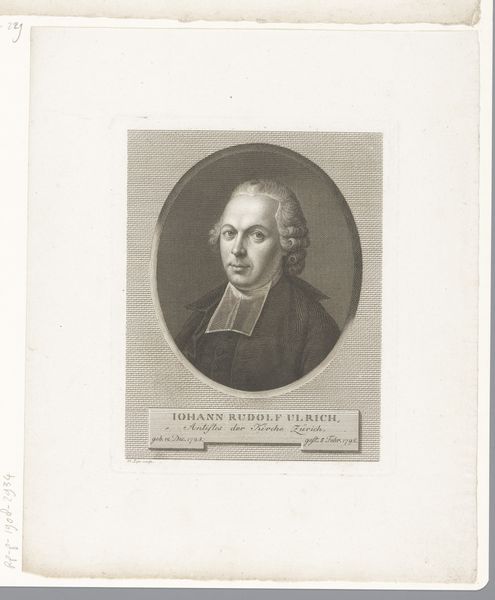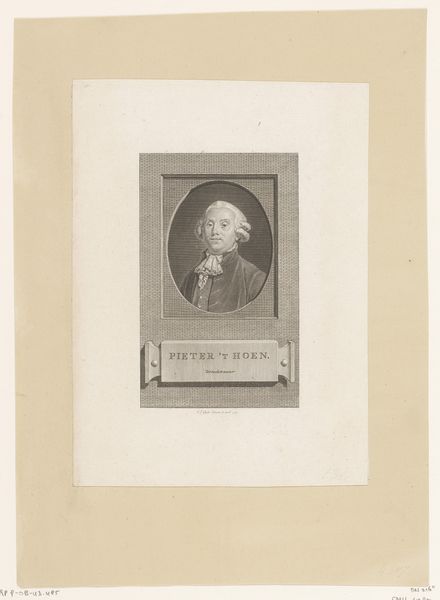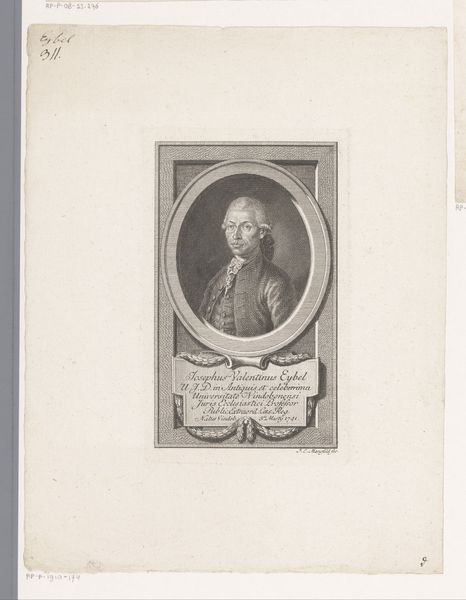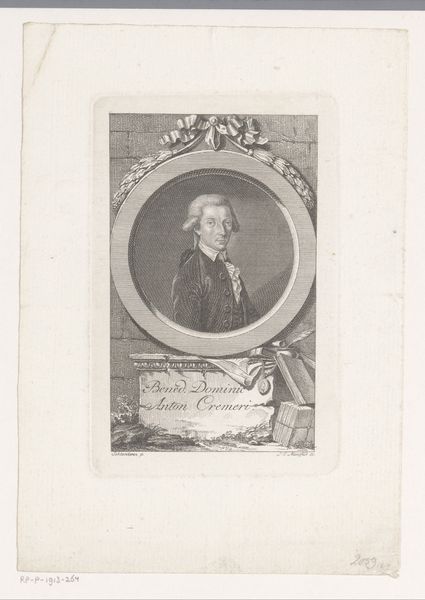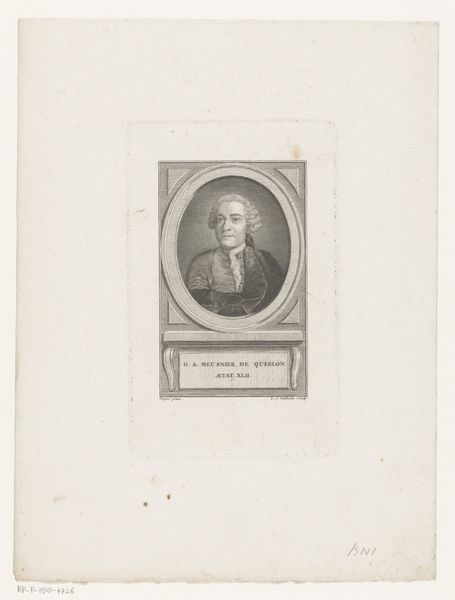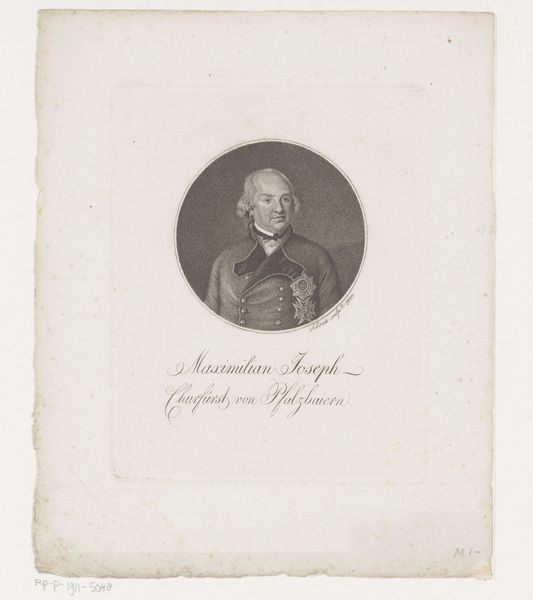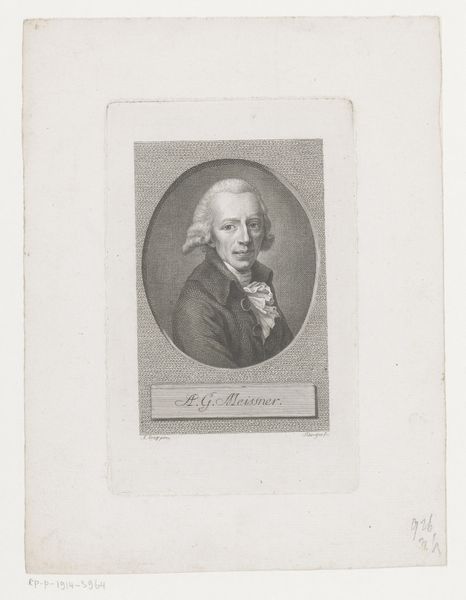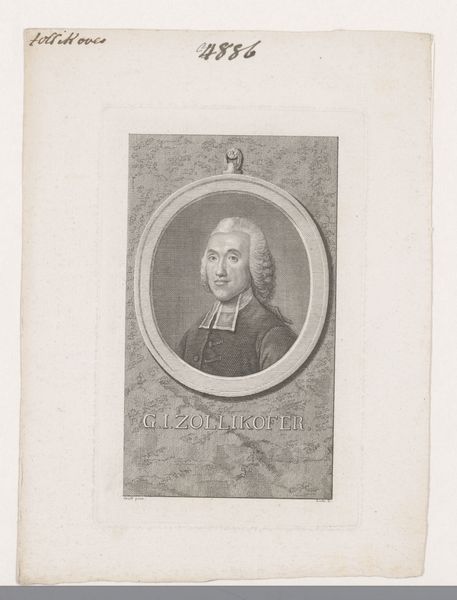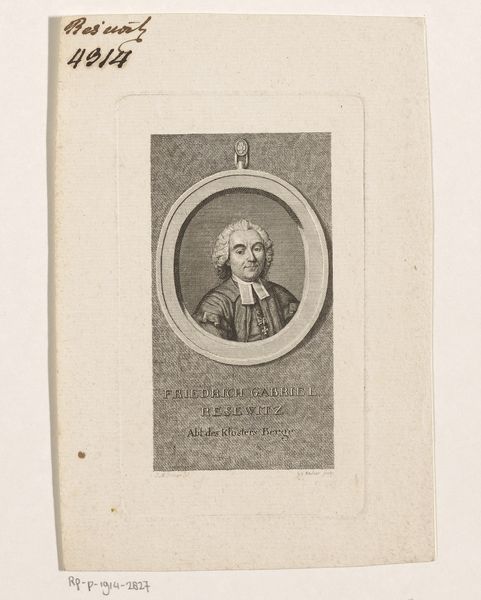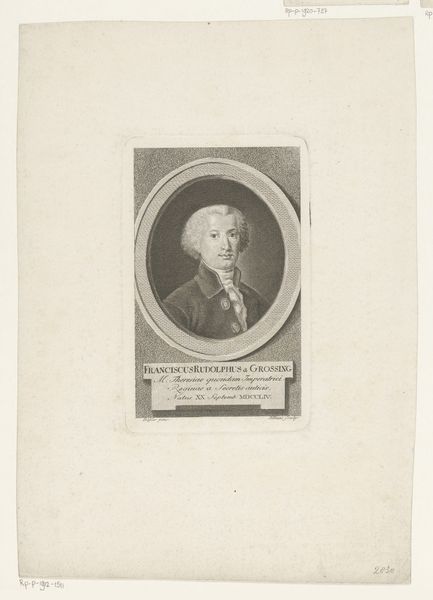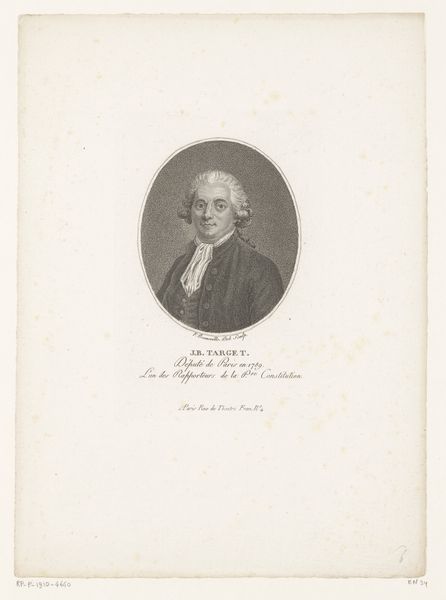
print, paper, graphite, engraving
#
portrait
#
neoclacissism
# print
#
paper
#
graphite
#
academic-art
#
engraving
Dimensions: height 85 mm, width 87 mm
Copyright: Rijks Museum: Open Domain
Curator: Looking at this print, the engraving titled "Portret van Johann Samuel Diterich," which dates roughly from 1794 to 1825 and is the work of Johann Gottlieb Boettger, what immediately springs to your mind? Editor: Stark simplicity, I'd say. A circle in a square, framing a rather stern-looking fellow. The stark black and white really underscores that feeling of austerity. And, naturally, my focus is drawn to the paper itself – the weave, the weight, the processes required. Curator: The neoclassical influence is palpable, isn’t it? Boettger captures a very specific formality. And you’re right to point out the materiality; that’s where the piece really sings, the process of engraving those fine lines… it's laborious, but precise. You can almost feel the pressure of the burin. Editor: Absolutely, consider the societal role here. Portraits immortalized through accessible print, moving the elites into the hands of a growing middle class. How many of these were produced, how quickly? What does that imply about the status of the sitter, and the maker? Curator: Ah, but there's a subtle warmth in the engraving, don’t you think? The sitter’s expression, despite the period's penchant for seriousness, hints at something more thoughtful, introspective perhaps. It's those almost imperceptible human details amidst the crisp lines that pull me in. It makes me think of the dreams that Diterich had. Editor: The subtle warmth exists through those hand-rendered marks. Someone took time to carve away at a plate, apply ink, press it down. The imperfections and variations in these actions reveal that, not the illusion. Every step tells a tale of craft labor. Curator: That's true; those hand-worked marks speak volumes about a whole era, actually. It's not just the surface-level image of Diterich, but the very real work etched into the metal, transferred to paper, the way an entire historical process finds its way here. I just want to add one little humanizing brushstroke for him though! Editor: And I’ll continue to celebrate the tools that did it. Curator: Yes. Each tells their side. It makes seeing, in the deepest way, richer for sure.
Comments
No comments
Be the first to comment and join the conversation on the ultimate creative platform.

